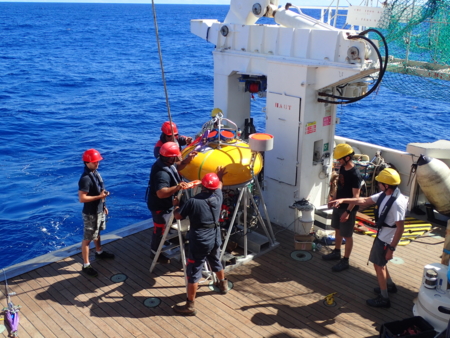Maganese nodule
This work has been inspired by two images linked to the current debates on deep-sea mining.
It requires millions of years of continuous chemical reactions to form the potato-shaped nodules spreading over the abyssal plain. Scientific discovery has shown a universe of biological diversity in the depths, contrary to what we previously assumed. The animals attached to this metallic nodule are a perfect example for us to reflect on our connection to the deep sea.
Manganese nodules from the seafloor. One has been cut in half. Photo Credit: Charles D. Winters/ Science Photo Library
A Relicanthus sp. (cnidarian) attached itself to a sponge talk on a polymetallic nodule in the CCZ.
Photo Credit: Diva Amon and Craig Smith, University of Hawai'i. Published as Amon et al. (2016) "Insights into the abundance and diversity of abyssal megafauna in a polymetallic-nodule region in the eastern Clarion-Clipperton Zone", Scientific Report, 6, 30492. https://doi.org/10.1038/srep30492

